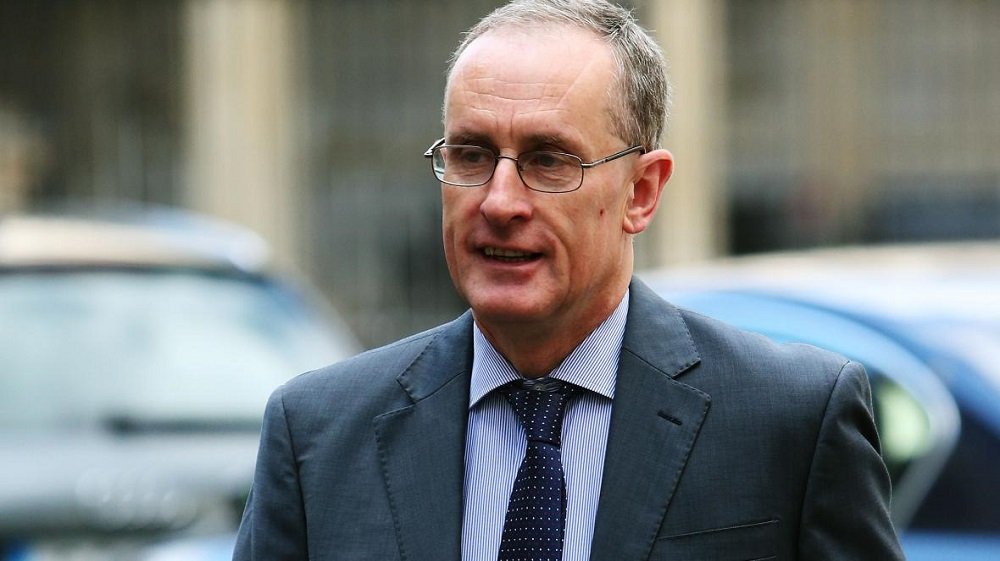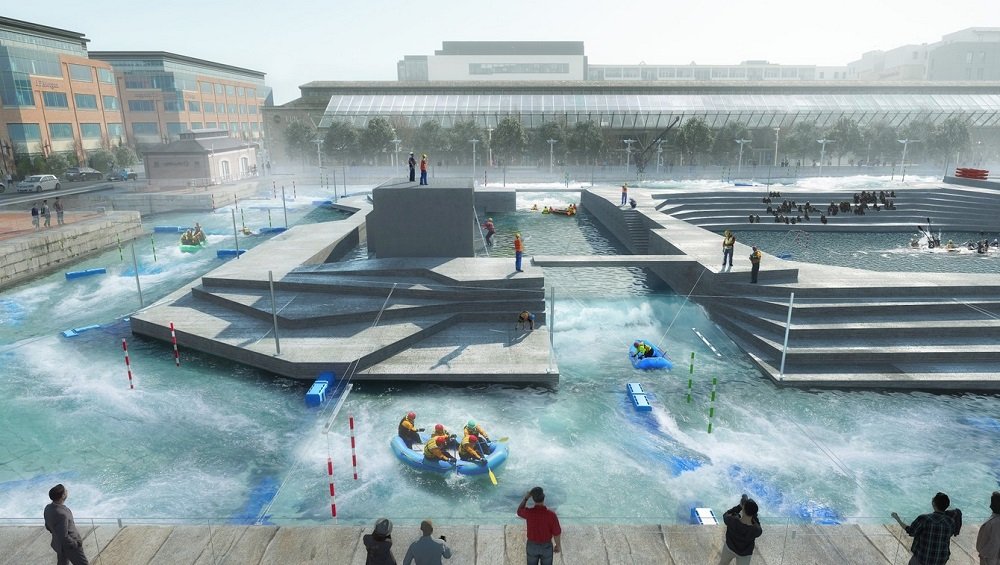Dublin City Council (DCC) first unveiled its controversial plans for a whitewater rafting facility in December 2019.
It was to embody a bold new vision for a windswept and dejected looking patch of land in the Dublin Docklands, a site once better known for beer steins and Bratwurst at Oktoberfest.
Within hours of its unveiling, the project met with heated opposition and derision. Eighteen months later and this first impression very much remains.
Technically, the project is still alive, and its construction is currently out to tender. However, in the public consciousness, the die is cast; it is an easy social media punchline.
Positives and negatives
In theory, there are many valid benefits to the project; it would help drive increased footfall into the north Docklands, potentially support a new ecosystem of water sports activities along the Liffey, provide a valuable local amenity for residents in the area (entrance fee permitting), and a novel tourist attraction for those seeking something different to the Irish pub experience.
There are also many compelling reasons to oppose it. At a time when more rudimentary public infrastructure such as housing, public toilets, cycling lanes, and outdoor seating is in short supply in Dublin, a rafting facility is probably not top of Maslow’s hierarchy of needs.
Underlying all of this is a contentious narrative of a city more preoccupied with the needs of its tourists than its inhabitants.
A failed sales pitch
History tells us that many capital projects are at first met with resistance. With time and perspective, some go on to prove successful; others quickly justify the initial opposition. However, the most damning aspect of the whitewater project has been how poorly it has been sold to the public.
From the outset, the project required a joined-up strategy that would sell its economic, training, sporting, and community benefits to a very disparate constituency of stakeholders. This plan needed to speak to both hard numbers and our feel-good sensibilities.
Instead, what we got was a muddled and poorly articulated sales pitch. Even today, most of us are still unclear who the project is aimed at: is it an expensive tourist attraction, an amenity for locals, or both? Does it aspire to be financially accessible to all or a pricey corporate away-day?

A vague and laboured defence
Recently, DCC chief executive Owen Keegan made an unlikely appearance on sports podcast Second Captains to defend the project.
Host Eoin McDevitt opened the interview by asking about the ‘thinking’ behind it. This was Keegan’s big opportunity to sell the manifold benefits of the facility and point to the exhaustive research supporting the concept.
It was an open goal to paint a picture of happy, smiling schoolchildren strapped into rafts slaloming over swells, night-time swimming lessons, and a fawned-over facility built on Irish people’s centuries-old love of swimming.
Instead, Keegan painted a laboured image of DCC inheriting an ill-fitting, ‘poorly animated’ site that nobody was quite sure what to do with. Someone eventually suggested a whitewater rafting facility, and in the absence of a better idea, here we are.
He was keen to stress that it was more than just a rafting facility; it would play host to a ‘swift water rescue training facility for our emergency services’, among other functions. However, his assertion that it would become ‘one of only two such rescue training facilities in the world’ had the rest of us further pondering why we needed such a facility if nobody else did.
Know your numbers and connect the dots
When your goal is to reframe a project that many have described as a ‘white elephant’, you need to know your numbers.
Keegan appeared unclear whether the supposed budget of €25 million was before or after VAT and admitted that the price points he quoted (€200 for an eight-person raft) were loosely based on a similar rafting facility in Cardiff before later observing that ‘Cardiff wouldn’t be as prosperous a location as Dublin’. Draw your own conclusions.
When questioned about the nearby Sean McDermott Street swimming pool, which according to reports has been closed for nearly two years due to broken tiles, Keegan struggled for an explanation beyond acknowledging ‘a need for investment in sporting facilities’ and suggesting ‘it is not a case of one or the other’.
However, 40 minutes later and the abiding question still hanging in the air was who is asking for this facility and where is the evidence to support it.
Keegan attempted to reassure listeners that it was ‘hard for people to get a picture of it if they’ve never seen it’, but what he and his colleagues at the DCC have failed to grasp from the very outset is that helping the rest of us understand the merits of this investment is very much part of the job spec, and this apparent disconnect continues to be their undoing.

Budgetary wins and preparing for the whataboutery
In those crucial early hours of the project’s unveiling, DCC failed to sell its vision. To this day it continues to pay the price.
In March this year, the Government, clearly reading the room, rejected DCC’s funding request made to the Urban Regeneration and Development Fund, and it is understood that numerous Dublin city councillors have since backtracked their initial support for the scheme.
When you’re in a battle for hearts, minds, and budgetary calls, it isn’t enough to roll your eyes at the inevitable whataboutery. Instead, plan for it and come armed with meaningful answers.
Unfortunately, Keegan’s Second Captains interview did little to convert doubters into believers. Instead, it betrayed signs of an individual or organisation that either wasn’t hearing the mood music or didn’t feel sufficiently accountable to the general public.
In the absence of a compelling sales pitch, DCC may have wasted significant amounts of time and money on a project that never sees the light of the day. They have given their critics an easy stick to beat them with.
In effect, they have turned this ‘poorly animated’ site into a poorly animated and failed sales pitch. In doing so, they have fed into the perception of a city council out of touch with the needs and wants of its inhabitants.

About the author
With his intelligent communications skillset and extensive media connections, Paddy helps clients build stand-out messaging and achieve their business objectives, whether they’re a start-up raising seed capital or an established player pushing for industry reform or telling their employer brand story. Paddy has been published in a number of national publications, including the Business Post, Irish Independent, Fora.ie, and The42.ie on the theme of strategic communications and reputation management.
